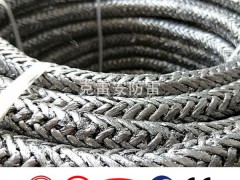降阻剂又分为:防腐降阻剂,缓释降阻剂,石墨降阻剂,高能回填料,保湿剂。高效降阻剂主要成分有 Na 、 Ca 、 Fe 、 Mg 、 Ti 、 C 等元素,外观为黑褐色粉状物。不含有毒元素,对环境无污染。电阻率:小于 1.5Ωm 适用于土壤电阻率高、多雨、土壤易流失等地区;酸碱性:pH值大于7小于12;埋地时对低碳钢及镀锌钢的平均腐蚀率:小于 0.01mm /年;经实验估算,有效使用年限不低于 30—50年;比重:干粉状态时为1.28吨/立方米。
石墨缓释降阻剂所应用的保湿配方、离子缓释、潜深接地、长效降阻四项科技解决了降阻性、耐腐性和使用寿命等问题,使得该在各项接地性能和适应性方面具有明显优势,应用领域十分广阔. 石墨降阻剂包含的材料具有非常好的膨胀性、吸水性及离子渗透性,通过毛细原理实现水分保留.无论天气或周围环境如何变化,都能使周围土壤保持一定的湿度,以达到很好的导电状态,且能随着时间的推移,逐渐扩大周围土壤的导电范围.降阻剂能减少施工工作量,可少打接地体,尤其可用水平接地体代替难于施工的垂直接地体(在山区及岩石地区等)。施工方便,可解决施工场地受局限的困难,可大量节省金属材料,具有长效性和稳定性,防腐性能好。较少受气候的影响。综合技术经济性好等。适用于不同的地质条件,在黑土、黄土、盐碱土、垃圾土、回填土、风化沙土、细沙土、黏土、山地通过优质的施工工艺均能达到良好的接地降阻效果
防腐降阻剂 地网设计中的重要参数之一就是岩土的土壤电阻率,此外,还要考虑开挖(钻进)难度、破碎还是整体岩石、持水能力等因数。 有的岩土电阻率高,但是在整体岩石之间常有较好的土壤间隙层,在这样的环境中,避开整体岩石,在间隙中开挖填灌降阻剂效果很好。阿坝卡吉岭通讯基站,土壤电阻率4500Ω.m,原联合地网接地电阻率68Ω,上述施工后接地电阻降为9.4Ω。
1)调制降阻剂按水:降阻剂=0.4~0.6:1.0的重量比加水并充分搅拌直至成粘糊状。水平接地用水量以刚好能够润湿全部干粉并可搅拌成糊状即可。垂直接地孔用降阻剂加水量可视情况取高值。过大的加水量会延长施工时间。
2)、浇灌、包覆、初检将调制好的糊状降阻剂轻轻倒入(以防泥石、杂物混入降阻剂中)接地沟、孔内直至全部无遗漏地包覆住接地极,并初测包覆厚度不小于40mm,钻孔四壁充实,不足时要补充。
3)、复检与回填夯实待降阻剂初凝后,详细检查降阻剂包覆应表面均匀、充分无遗漏、无杂物混入,包覆体厚度最薄处不少于40mm,不足时要补充降阻剂。检查无误后,抽走固定细线,轻轻回填无硬物和树枝的细土,厚度要达到20mm以上,然后再加其他土壤并夯实。夯实后的回填土表面应略高于周围地平面。
4)、对接地引下线要求接地引下线在地表交界段需全段涂刷2~3道环氧沥清漆、FVC漆或其他耐久漆,其地下段长度应使埋入降阻剂的部分不短于20mm,地表上面部分长度不短于30mm。
5)、深井接地深井接地有时是必需的。通常井深由找到电阻率低的地层或地下水来决定,一般达数十米。施工时用专用机械钻孔,孔径为80~150mm。有时要配以局部爆破,炸松四周土壤,以填充降阻剂,扩大降阻效果。接地电极用四壁上钻有Φ10~15mm通孔的钢管。用压力将调制好的降阻剂注入管内,通过壁孔使降阻剂从内外两侧包围钢管并充实整个钻孔。
英文介绍
Power engineering special graphite reducer level high energy backfill specifications
Main technical indicators of resistance reducer:
The resistance reducing agent is further divided into: anti-corrosion reducing agent, slow release resistance reducing agent, graphite reducing agent, high energy back filler, moisturizing agent. The main components of the high-efficiency drag reducer are Na, Ca, Fe, Mg, Ti, C and other elements, and the appearance is dark brown powder. Contains no toxic elements and is environmentally friendly. Resistivity: less than 1.5Ωm Suitable for areas with high soil resistivity, heavy rain, easy soil loss, acidity and alkalinity: pH value is greater than 7 and less than 12; average corrosion rate of low carbon steel and galvanized steel when buried: less than 0.01 Mm / year; experimentally estimated, the effective life is not less than 30-50 years; specific gravity: 1.28 tons / cubic meter in dry powder state.
Long-lasting anti-corrosion and drag reducer performance:
The four technologies of graphite moisturizing formula, ion slow release, deep grounding and long-term resistance reduction solve the problems of resistance reduction, corrosion resistance and service life, making the grounding performance and The adaptability has obvious advantages and the application field is very broad. The graphite reducer contains materials with very good expansion, water absorption and ion permeability, and the moisture retention is achieved by the capillary principle. No matter how the weather or the surrounding environment changes, The surrounding soil is kept at a certain humidity to achieve a good conductive state, and the conductive range of the surrounding soil can be gradually expanded with the passage of time. The resistance reducing agent can reduce the construction workload, and the grounding body can be less, especially the available level. The grounding body replaces the vertical grounding body (in mountainous areas and rocky areas, etc.) that is difficult to construct. Convenient construction can solve the problem of limited construction site, can save a lot of metal materials, has long-term stability and stability, and has good anti-corrosion performance. Less affected by the climate. Comprehensive technical economy and so on. Applicable to different geological conditions, in the black soil, loess, saline-alkali soil, garbage soil, backfill soil, weathered sand, fine sand, clay, mountain, through the high-quality construction process can achieve a good grounding resistance reduction effect
Anti-corrosion and resistance-reducing agent One of the important parameters in the design of the ground network is the soil resistivity of the geotechnical soil. In addition, factors such as the difficulty of excavation (drilling), the fracture or the overall rock and water holding capacity are also considered. Some geotechnical resistivity is high, but there is often a good soil gap layer between the whole rocks. In such an environment, avoiding the whole rock, it is very effective to excavate and fill the drag reducer in the gap. Aba Kajiling communication base station, the soil resistivity is 4500 Ω.m, the original joint grounding grid grounding resistivity is 68 Ω, and the grounding resistance drop after the above construction is 9.4 Ω.
General requirements for antiseptic humectants
1) The pressure reducing agent is prepared by adding water according to the weight ratio of water: drag reducing agent = 0.4 to 0.6: 1.0 and stirring well until it becomes a paste. The horizontal grounding water consumption is just enough to wet all the dry powder and can be stirred into a paste. The vertical grounding hole can be taken as a high value by the amount of water added by the resistance reducing agent. Excessive water addition will extend construction time.
2), watering, coating, initial inspection, gently pour the prepared paste-like resistance-reducing agent (to prevent mud and debris from mixing into the resistance-reducing agent) to cover the grounding groove and the hole until all are covered. Grounding pole, and the thickness of the initial test coating is not less than 40mm, the four walls of the borehole are full, and should be supplemented when it is insufficient.
3), re-examination and backfilling After the initial condensation of the resistance-reducing agent, the surface of the resistance-reducing agent should be examined in detail, and the surface should be uniform, fully leak-free, and free from impurities. The thinnest part of the thickness of the coating body is not less than 40mm. To add a drag reducer. After the inspection is correct, remove the fixed thin line and gently backfill the fine soil without hard objects and branches. The thickness should be more than 20mm, then add other soil and compact. The surface of the backfill after compaction should be slightly higher than the surrounding ground level.
4). Grounding down the line is required. Grounding down the line. At the junction of the surface, it is necessary to apply 2~3 times of epoxy asphalt varnish, FVC paint or other durable paint. The length of the underground section should be the part of the buried drag reducing agent. Not less than 20mm, the length of the upper part of the earth's surface is not shorter than 30mm.
5) Deep well grounding Deep well grounding is sometimes necessary. Usually the depth of the well is determined by finding a formation with low resistivity or groundwater, typically tens of meters. Drilling with special machinery during construction, the hole diameter is 80 ~ 150mm. Sometimes it is accompanied by partial blasting, which loosens the surrounding soil to fill the resistance reducing agent and expand the resistance reduction effect. The grounding electrode is drilled with a steel pipe having a through hole of Φ10 to 15 mm on the four walls. The prepared pressure reducing agent is injected into the tube by pressure, and the resistance reducing agent surrounds the steel pipe from the inner and outer sides through the wall hole and enriches the entire borehole.




 [诚信档案]
[诚信档案]













